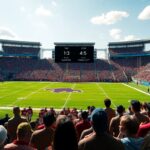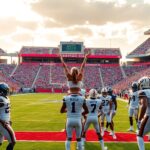George McLaurin, the first black man admitted to the University of Oklahoma in 1948, was forced to sit in a corner away from his white classmates. But his name remains on the honor roll as one of the university’s top three students
George McLaurin, the first black man admitted to the University of Oklahoma in 1948
George W. McLaurin (September 16, 1894 September 4, 1968) was the first African American to attend the University of Oklahoma. George completed a master’s degree from the University of Kansas and was a retired professor living in Oklahoma City.
Prior to his retirement, he was a professor at a predominantly black college, Langston University. He applied to and was accepted at the University of Oklahoma in 1948 because of the supreme court trial of McLaurin vs. Oklahoma State Regents for Higher Education.
Mclaurin vs. Oklahoma which allowed African Americans to be admitted to graduate education at the University of Oklahoma on a segregated basis. In the case, Mclaurin was supported by ThurgoodMarshall,AmosT. Hall, Roscoe Dunjee, and five other African-American students. The University was required by law to allow McLaurin into the school, but he was completely segregated from the other students.
Later, when other African American students were admitted to the school, they went through similar conditions such as different classrooms, libraries, cafeterias and restrooms.
On September 29, 1948 a federal court ruled that the University of Oklahoma’s refusal to admit McLaurin was unconstitutional.
To comply with segregation laws President George Lynn Cruz arranged for George McLaurin’s classes to be held in classrooms with an anteroom.
In this way, McLaurin could sit away from white students while attending all of his classes. Other special accommodations that were created to continue segregation include special seating areas in the cafeteria, sporting events, and separate restrooms.
In retaliation for these conditions, McLaurin filed a lawsuit claiming that these conditions deprived him of equality. The District Court disagreed with his argument and denied his motion for the reason that racial segregation is a “deeply entrenched social policy of the State of Oklahoma.”
Subsequently, McLaurin took his case again, but this time it went to the U.S. Supreme Court. This would begin the timeline of the State Regents McLaurin vs. Oklahoma for Higher Education play.
In McLaurin vs. Oklahoma State Regents for Higher Education McLaurin argued that the Fourteenth Amendment was being violated by the way they were being treated. It wasn’t until 1950 that the Supreme Court ruled that treatment must be equal between white and African American students.
McLaurin vs Oklahoma State Regents was an important case in history, as it was one of the first cases that attempted to combat the “separate but equal” provision in Plessy v Ferguson. McLaurin v Oklahoma showed how the “separate but equal” provision can still be manipulated in a way that discriminates against people on the basis of race. This case played an influential role in history because its ruling paved the way for the eventual overturning of Plessy v Ferguson.
The Mclaurin case showed the inequality in the separate but equal provision, the accommodations made for Mclaurin required him to sit separate from the other students, in an alcove labeled “reserved colored”, he sat alone in the cafeteria and he also had his own library desk, which was behind a stack of newspapers so he would not be seen by the white students.
All of these discriminatory practices went under the umbrella of the “separate but equal” provision. In 1950 a unanimous Supreme Court ruled that McLaurin had not received equal treatment as required by the Constitution.
Writing for the Court, Justice Frederick M. Vinson wrote that McLaurin was “handicapped in his pursuit of effective graduate instruction. Such restrictions affect and inhibit his ability to study, to participate in hearings for discussion and exchange with other students, and generally to learn about his professions.”
Currently, there is a meeting named after George A. McLaurin on the campus called The George McLaurin Men’s Leadership Conference. The conference is intended primarily for the recruitment of first-generation college students.





